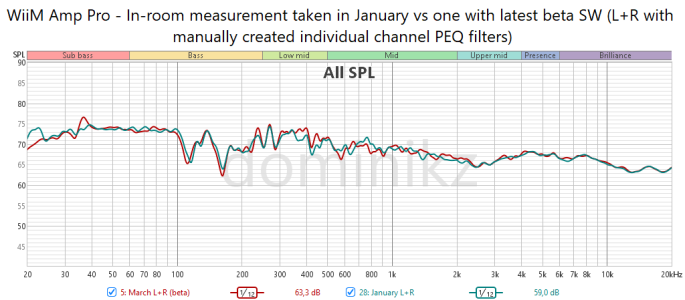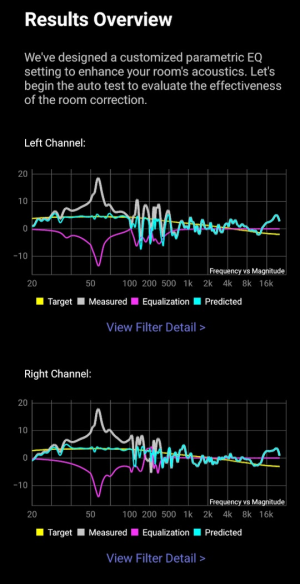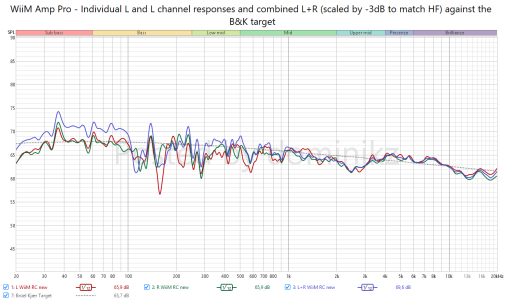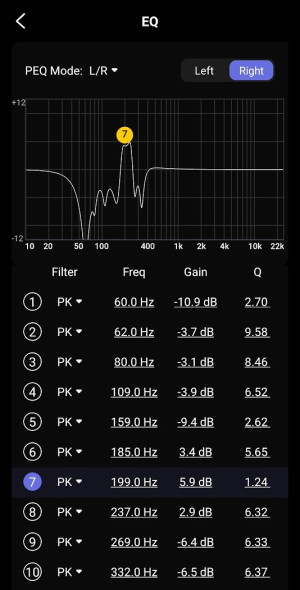@slartibartfast Is the response in red the summed L+R channel response measurement?
I'm asking because if you EQ left and right channels each individually to the B&K target, it is expected that the summed L+R response will be about 3dB higher in the bass range.
In my experience the two channels will sum as incoherent sound sources at high frequencies (i.e. +3dB compared to individual channel level) and as coherent sound sources at low frequencies (i.e. +6dB compared to individual channel level).
The difference is usually the biggest below about 200Hz, which to me looks exactly like what your measurements seem to show.
So if you use the "stereo" RC variant I would expect the summed L+R measurement to match the B&K curve well, but if you use the individual channel RC variant I'd expect the summed L+R measurement to overshoot the B&K curve by about 3dB below 200Hz or so.
This would IMHO be the expected behavior if the new RC algorithm works correctly.
One way to address this would be by introducing a new variant of the B&K target curve with approx. 3dB less bass, which could be used by those who want the summed L+R response to match the B&K target when using individual channel correction.
Personally I prefer to have each channel match the original (unmodified) B&K curve, and have the +3dB bass level in the summed response, and I wouldn't want to lose this capability.
With the original Beta release of the individual channel room correction with subwoofer enabled I also saw a similar dip between 30-80Hz with the newly calculated RC filters (this was IMHO indeed a bug):
View attachment 17953
The RC function didn't predict this dip:
View attachment 17954
But it did measure it when running result assessment - reinforcing the fact that this was not working as expected:
View attachment 17955
Note that I haven't yet tried to re-do RC with the updated version of the algorithm mentioned by
@WiiM Team in
post #28. Based on your (
@slartibartfast) results from the previous post it seems to me the new version solved the issue, and I'm looking forward to retesting with the new algorithm!






